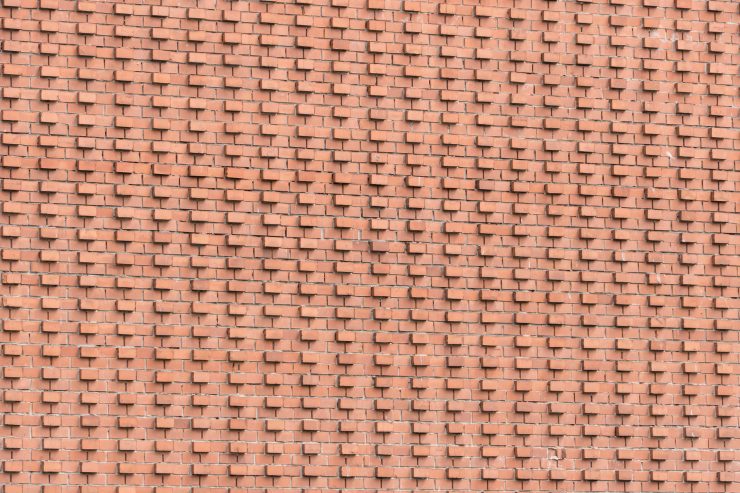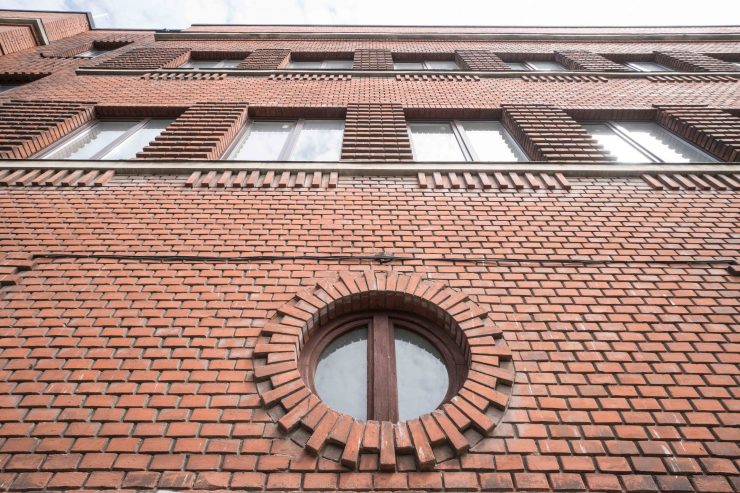
Palace of Culture named after Khotkevych / Club of Utility Workers
The club of utility workers was supposed to satisfy all the cultural, entertainment and educational needs of the workers. “A beautiful modern building”, as the press of that time wrote, was erected upon the request of the “Home of Utility Workers” union.
- Constructed: 1933 - 1938
- Style: functionalism, modernism
- Architects: Tadeusz Wróbel Leopold Karasinski

After numerous workers’ strikes, which were, among other things, about the possibility of having their own club, the magistrate bought a square on Kushevycha Street, 1. The money for the construction was deducted from the workers’ salaries. Everyone gave 1% of their salary to the club. The community also participated in building the house in their free time from their main work.
The cornerstone of this building was consecrated on September 3, 1933. The event was accompanied by an orchestra and ended with a party at the Municipal Shooting Range (modern Lysenka Street). In addition to utility workers, the vice mayor of Izhyk and a representative of the Construction Union were present, Chwila newspaper wrote. The decision to build a house for utility workers of Lviv kept pace with global trends in the activities of labor organizations.
The official opening of the club took place on September 11, 1938. This time, the mayor of the city Stanisław Ostrowski himself, two vice-mayors, employees of the magistrate and owners of the main Lviv enterprises came to the event.
The architects Tadeusz Wróbel and Leopold Karasiński were the authors of the building project. The house got three floors, a reinforced concrete frame with brick structures. The construction looked very dynamic: three rows of horizontal windows that extended from both sides to a light glass bay window, the entrance portal on the eastern side of the building is accentuated by the volumes playing. After reconstruction in 1976-1980s the building was significantly enlarged: an extension had been made on the west side and a stage box was added above the third floor. The modification of the house was very successful, the authors of the project followed the proportions and style of the main part of the house. The only thing that shows up the reconstruction is the different shades of brick: it’s much darker on the old part.
Despite the simple and honest forms, the facade is delicately decorated with the same brick. We can observe vertical, horizontal and spherical brick belt courses around the windows. In the extension of the Soviet period, these decorations are also followed. It is interesting that at the western end of the facade we see a brick pattern on the entire wall, which refers us to another interwar project of a similar function of the Railway Workers’ Club (modern Fedkovycha Str. 54-56).
The author of the project, the well-known Warsaw architect Romuald Miller actually invented this technique of decorating blank walls with protruding bricks, which he had first used in projects in Warsaw, later in Lviv. Many Soviet architectural projects also appropriated this technique, which had been born in the 1930s.
The interior of the house contrasts with the simple approaches of the facade, which often happens in modernism, after all. The walls of the vestibule are lined with natural black stone with alabaster inserts. In the inserts we see reliefs in the form of roses. Next, the hall and stairwell are decorated with multi-coloured alabaster. The luxury is added with brass grilles on the radiators, both in the vestibule and on the platforms between the stairs.
The Club of Utility Workers housed a bowling alley, a theater, a library, and the Svitovyd cinema. In addition to performances, poetry readings, chess and boxing tournaments, as well as carnivals took place in the building. The cinema showed the newest films of the time.
The club also became a venue for various political events. It hosted poetry readings and meetings for the education of “the new Polish patriotic youth” as well as congresses of the left-wing political parties of Poland. Even before the official opening of the building, in May 1936, a gathering of cultural figures, known as the Lviv Congress of Culture, was held here.
Left-wing representatives of the culture of Lviv and other cities in Poland of that time gathered at this event. The event took place in the context of pan-European concern over the rise of Nazism (the first was the Paris International Congress of Writers for the Protection of Culture in 1935). Most of the congress participants had a strong pro-Soviet position.
In Soviet times the club worked as the House of Culture of Trammers, then it was renamed into the Palace of Culture named after Kuznetsov. Now the building is called the City Palace of Culture named after Hnat Khotkevych. City cultural institutions operate here as well as a concert hall and a gallery.
The Club of Utility Workers of Lviv is an interesting example for the layering of different eras, political ideas and design over an almost century-long period of time. It’s a kind of a map of contradictions (see Latour), according to which you can study the ambiguity of the urban history.
Source and literature:
- https://modernism.lvivcenter.org/#/en/map/object/2579
- Chwila № 1463, 12.05.1939
- Chwila № 1333, 24.12.1938
- Chwila № 5193, 5.09.1933
- Chwila № 1246, 12.09.1938
- Chwila № 6994, 9.9.1938
- Chwila № 6328, 1.11.1936
- https://polona.pl/item/afisz-inc-kolo-zabawowe-dzieln-p-p-s-w-sygnowce-wielkiej-urzadza-w-sobote-dnia
- https://rokantyfaszystowski.org/wp-content/uploads/2018/12/zjazd-pracownikow-kultury-lwow
- The Space of Controversies: An Interview with Bruno Latour, New Geographies, 2009




























